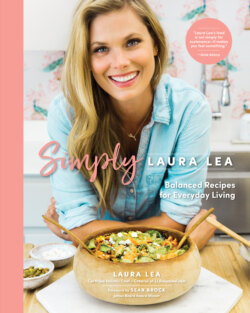Читать книгу Simply Laura Lea - Laura Lea - Страница 38
ОглавлениеTips for Prepping, Cooking, and Freezing
Gas versus Electric Stove: I’m addressing this
first, in the hopes that more people will read it,
because it is important. I cooked the recipes for my
first cookbook on a gas stove, and I cooked these
recipes on an electric stove. I had a team member,
Lelan, cook most of this book’s recipes on a gas stove,
to make sure there wasn’t a dramatic difference.
There was not. You will get the same result cooking
on a properly working gas stove as you will on a
properly working electric stove. However, here’s
what you do need to know: electric stoves take longer
to heat up—60 to 90 seconds longer. This means,
achieving the “when the oil moves quickly around
the pan” stage takes longer on an electric stove, and
you do need to be patient and wait for it to reach
appropriate heat. It also means that liquid might take
longer to reach a simmer or boil than on an electric
stove. However, once the pot or pan has reached
the “marker,” such as oil moving quickly or liquid
simmering, recipes should cook exactly the same
on gas and electric. If you have an electric stove,
resist the temptation to crank it up to “high” to make
things go more quickly—this will lead to burning and
general inaccuracy.
Prepping a Recipe: First, a gentle reminder to
always read your recipes in advance. That is probably
the most valuable tip I can give you for cooking
success! As you read through the recipes, you’ll notice
that some require a bit more prep, such as chopping,
mixing, and measuring. It is very important to go
ahead and prep the ingredients before you begin
cooking. This is traditionally known as mis en place or
“everything in its place,” and it is absolutely key to a
pleasant and victorious cooking experience!
Wet versus Dry Measuring: It’s important to
measure your wet and dry ingredients differently.
Wet ingredients require a liquid measuring cup,
which usually looks like a glass with a handle and
markings that designate volume. Liquid measuring
cups are specifically designed so that, if you squat
down so that your eye is at measuring line level, you’ll
get an accurate reading. If you were to try to use
dry ingredient measuring cups for liquid you would
1) likely spill some and 2) get a slightly inaccurate
measurement. To properly measure dry ingredients,
you want to scoop them so that they’re a bit overly
full, and then use a butter knife to scrape any excess
off across the top. Before scraping, I suggest tapping
the cup gently on the countertop, to remove any air
and make sure you’ve actually filled it properly.
Making Sauces, Dressings, Seasoning Mixes,
and Condiments: If an ingredient list includes a
subsection for any of these, look for when to make
them in the instructions. Often they don’t need to be
made first and instead can be made when something
else is cooking or marinating or cooling.
